 |
Nomad kids in front of their summer grazing grounds near Dzogchen / Zogqen, in the North of Derge County. In the background are the glacier peaks of the impressive Cho La /Tro La Mountain Range with Trori Dorje Ziltrom Peak (5,816m). Dzogchen Tsachuka Hot Spring (ca. 4020m) are about 30 km distance to the West down the Manigango-Jyekundo (Yushu) Road.
© Daniel Winkler Photo: July 1998, 4500m, Derge/Dege County, Ganzi TAP, West Sichuan.
|
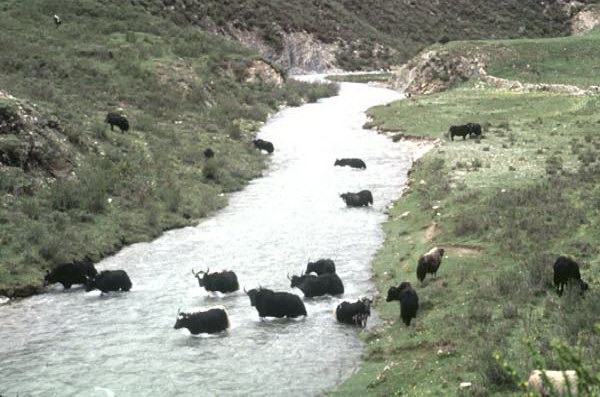 |
These yaks are not crossing the river, they are cooling off. Not that it seemed to me as a hot day, but I do not have that kind of a wool coat. Below the rough outer hair, which is used for tents and many other things, is a layer of very soft wool, known to Tibetans as Kulu. When Kulu is cleaned and spun, it makes a very warm and soft wool. © Daniel Winkler
Photo: June 1997, Tengchen / Dengqen County, Qamdo / Chamdo / Changdu Prefecture, Tibet AR.
|
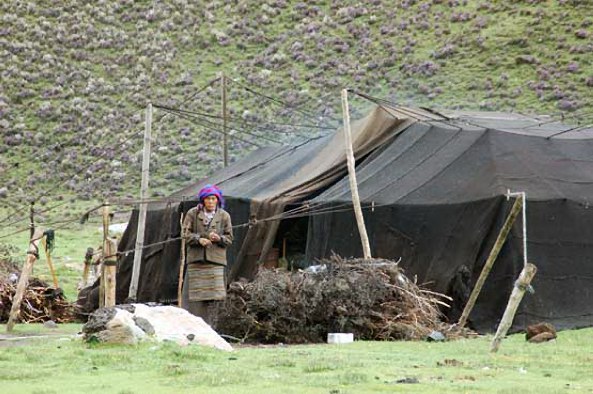 |
A nomad tent in near Kongpo Barla during yartsa gunbu / caterpillar fungus season. The animals are still down in the valley in order to keep them from grazing or trampling yartsa gunbu. June 2006, Meldrogongkar County, Lhasa Shi, Tibet AR
|
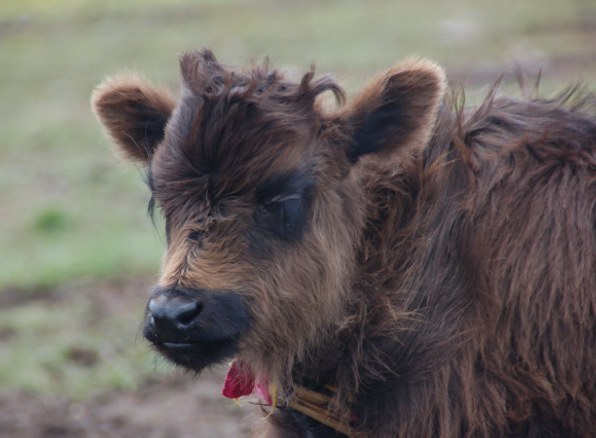 |
So cute!
A yak calf. Unfortunately yaks are extremely shy. August 2007, Nyachuka / Yajiang County, Ganzi TAP, Sichuan Province.
|
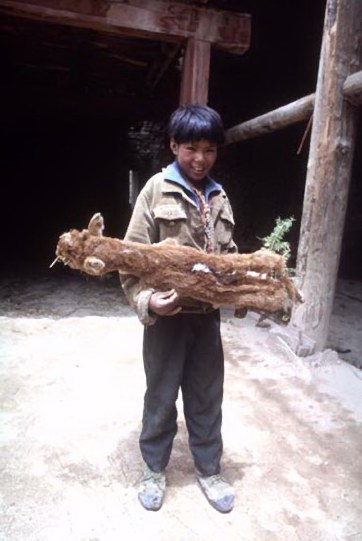 A farm boy is showing a stuffed dzo calves [Yak-cow cross bread]. When a calf is lost the mother is fooled into continued milk production by such a device. Barkam / Ma'erkang April 2002 © Daniel Winkler
|
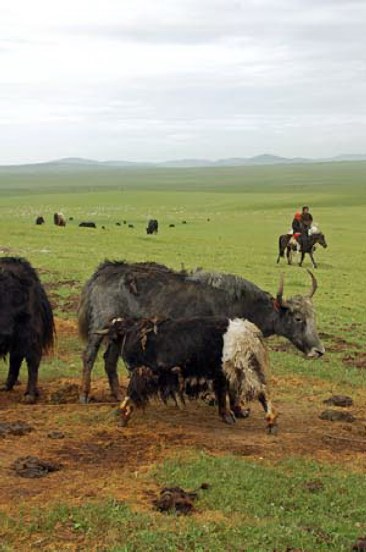 Here a real calf trying to drink. Yak cows produce the same amount of milk as wild yaks do. So whatever milk the herders take the calf will not receive. Part of it can be balanced with additional fodder, but traditional livestock herding allows only for a calf every two years.
August 2008, Zartang, Machu / Maqu County, Ganlho / Gannan prefecture, Gansu Province.
|
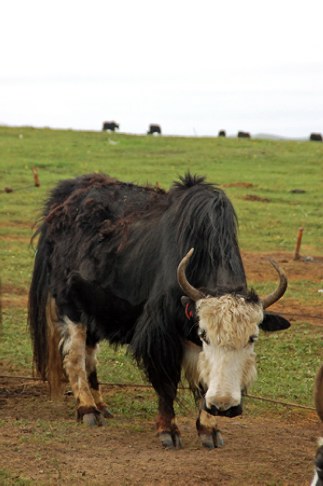 A Yak in Zartang, Machu / Maqu County, Ganlho / Gannan prefecture, Gansu Province. August 2008
|
 A herder's summer camp in front of Pema Karpo (Baima Xueshan, NW Yunnan). These livestock herders are no true nomads, since they also have farms in the valleys. This form of livestock management is called transhumance, since the animals are moved seasonally to summer pastures high up in the mountains.
© Daniel Winkler, Pema Karpo, July 2007.
|
|
Last update 4-25-2010
|
